Description
Familiarity with treatment
A thigh lift, also known as thighplasty, is a surgical procedure that aims to improve the contour and appearance of the thighs by removing excess skin and fat. It is commonly performed on individuals who have lost a significant amount of weight or have excess skin and tissue in the thigh area due to aging or genetics.
During a thigh lift, incisions are made in the inner thigh or along the groin crease, depending on the extent of correction needed. The surgeon then removes excess skin and fat, tightens the remaining skin, and may also perform liposuction to further contour the thighs. The incisions are then closed, and the patient is given postoperative care instructions.
Thigh lift surgery can address various concerns, including:
- Excess skin: Individuals who have lost a significant amount of weight often have loose, sagging skin in the thigh area. A thigh lift can remove this excess skin, resulting in a smoother and more toned appearance.
- Fat deposits: In some cases, individuals may have stubborn fat deposits in the thighs that are resistant to diet and exercise. Liposuction can be performed during a thigh lift to remove these fat deposits and improve the overall contour of the thighs.
- Cellulite reduction: Thigh lift surgery can also help reduce the appearance of cellulite, which is a common concern for many individuals. By removing excess skin and fat, the skin’s texture can be improved, reducing the visibility of cellulite.
- Improved body proportion: Thigh lift surgery can enhance the overall body proportion by creating a more balanced and harmonious appearance between the thighs and the rest of the body.
Who is it suitable for?
A thigh lift is suitable for individuals who have excess skin and fat in the thigh area and desire a more toned and contoured appearance. It is commonly performed on individuals who have experienced significant weight loss or have loose, sagging skin due to aging or genetics. Suitable candidates for a thigh lift typically meet the following criteria:
- Excess skin and fat in the thighs: Candidates for a thigh lift should have excess skin and fat in the thigh area that is not responsive to diet and exercise. This excess skin and fat can cause discomfort, hinder mobility, and affect body confidence.
- Stable weight: It is important for candidates to have reached a stable weight before considering a thigh lift. This ensures that the results of the surgery will be long-lasting and that further weight loss or gain will not negatively impact the outcome.
- Good overall health: Candidates should be in good overall health and free from any medical conditions that could increase the risks associated with surgery. A thorough medical evaluation will be conducted to assess the individual’s health status and determine their suitability for the procedure.
- Realistic expectations: It is important for candidates to have realistic expectations about the results of a thigh lift. While the procedure can significantly improve thigh contour and address excess skin and fat, it is important to understand that it will leave permanent scars and that individual results may vary.
- Commitment to postoperative care: The recovery process after a thigh lift can be lengthy and requires a commitment to following postoperative care instructions. Candidates should be prepared to adhere to wound care protocols, wear compression garments, and follow activity restrictions as advised by their surgeon.
Who is it not suitable for?
Thigh lift may not be suitable for everyone. Here are some factors that may make a person ineligible for the procedure:
- Obesity: Thigh lift is not a weight loss procedure. It is designed to remove excess skin and fat from the thighs. Individuals who are significantly overweight or obese may be advised to lose weight through diet and exercise before considering thigh lift surgery.
- Poor overall health: Thigh lift is a surgical procedure that requires general anesthesia. Individuals with certain medical conditions, such as uncontrolled diabetes, heart disease, or compromised immune systems, may not be suitable candidates for surgery.
- Unrealistic expectations: It is important for individuals considering thigh lift to have realistic expectations about the outcome of the procedure. While thigh lift can improve the appearance of the thighs, it cannot completely eliminate cellulite or create a “perfect” thigh contour. It is important to have a thorough discussion with a plastic surgeon to understand the potential results and limitations of the procedure.
- Smoking: Smoking can impair the healing process and increase the risk of complications after surgery. Individuals who smoke may be advised to quit smoking before undergoing thigh lift surgery.
- Pregnancy or plans for future pregnancies: Thigh lift surgery may be less effective if a person plans to become pregnant in the future. Pregnancy can stretch the skin and undo the results of the procedure. It is generally recommended to wait until after completing all desired pregnancies before considering thigh lift surgery.
Advantages
Thigh lift, also known as thighplasty, is a surgical procedure that aims to reshape and contour the thighs by removing excess skin and fat. Here are some advantages of thigh lift:
- Improved body contour: Thigh lift can help improve the overall appearance of the thighs by removing sagging skin and excess fat. It can create a smoother and more toned contour, enhancing the shape of the legs.
- Reduction of excess skin: Thigh lift is particularly beneficial for individuals who have lost a significant amount of weight or have loose skin due to aging. It can effectively remove excess skin and tighten the remaining skin, resulting in a more youthful and firmer appearance.
- Enhanced self-confidence: Thigh lift can have a positive impact on a person’s self-esteem and body image. By achieving a more proportionate and aesthetically pleasing thigh contour, individuals may feel more confident and comfortable in their own skin.
- Improved mobility and comfort: Excess skin and fat in the thighs can cause discomfort and chafing, especially during physical activities or when wearing certain clothing. Thigh lift can alleviate these issues, allowing for improved mobility and increased comfort.
- Long-lasting results: Thigh lift provides long-lasting results, as the excess skin and fat are permanently removed. However, it is important to maintain a healthy lifestyle and weight to ensure the longevity of the results.
Complications
Like any surgical procedure, thigh lift carries potential risks and complications. While complications are rare, it is important to be aware of them. Some possible complications of thigh lift surgery include:
- Infection: There is a risk of developing an infection at the incision site. This can usually be treated with antibiotics, but in some cases, additional surgical intervention may be required.
- Bleeding: Excessive bleeding during or after surgery is a potential complication. This can sometimes require a blood transfusion or additional surgical intervention to control the bleeding.
- Poor wound healing: Some individuals may experience delayed wound healing or wound separation. This can lead to scarring or the need for additional surgical procedures to correct the issue.
- Scarring: Thigh lift surgery involves incisions, which will result in scars. While efforts are made to minimize scarring and place incisions in inconspicuous areas, the extent of scarring can vary depending on individual factors such as genetics and healing ability.
- Numbness or altered sensation: Temporary or permanent numbness or altered sensation in the thighs may occur after thigh lift surgery. This is usually temporary but can persist in some cases.
- Fluid accumulation: Fluid accumulation, known as seroma, can occur after surgery. This may require drainage through a needle or additional surgical intervention.
- Blood clots: There is a risk of developing blood clots, known as deep vein thrombosis (DVT), after any surgical procedure. These clots can be potentially dangerous if they travel to the lungs (pulmonary embolism). Measures such as early ambulation and the use of compression stockings are taken to minimize this risk.
- Anesthesia risks: General anesthesia carries its own set of risks, including allergic reactions, respiratory problems, and adverse reactions to medications. These risks are generally low but can occur.
Preoperative care
Preoperative care is an essential part of preparing for thigh lift surgery. Here are some general preoperative care guidelines that may be recommended by your plastic surgeon:
- Medical evaluation: Before undergoing thigh lift surgery, you will likely need to undergo a thorough medical evaluation. This may include a physical examination, blood tests, and other diagnostic tests to ensure that you are in good health and a suitable candidate for surgery.
- Medication review: Inform your plastic surgeon about any medications, supplements, or herbal remedies you are currently taking. Some medications, such as blood thinners, may need to be temporarily discontinued before surgery to reduce the risk of excessive bleeding.
- Smoking cessation: If you are a smoker, your plastic surgeon may advise you to quit smoking before undergoing thigh lift surgery. Smoking can impair the healing process and increase the risk of complications. It is generally recommended to stop smoking for at least a few weeks before and after surgery.
- Avoid certain substances: Your surgeon may advise you to avoid alcohol, recreational drugs, and certain medications in the days leading up to surgery, as they can interfere with the anesthesia and recovery process.
- Fasting: You will likely be instructed to fast for a certain period of time before surgery. This is to ensure that your stomach is empty and reduce the risk of complications during anesthesia.
- Arrange transportation and support: Since thigh lift surgery is performed under general anesthesia, you will not be able to drive yourself home after the procedure. Arrange for someone to drive you to and from the surgical facility and have a support person available to assist you during the initial recovery period.
- Follow preoperative instructions: Your plastic surgeon will provide you with specific preoperative instructions to follow. This may include guidelines on showering, skincare, and avoiding certain foods or beverages. It is important to carefully follow these instructions to ensure a smooth and successful surgery.
- Mental and emotional preparation: Thigh lift surgery is a significant procedure, and it is important to be mentally and emotionally prepared. Take the time to understand the procedure, discuss any concerns or questions with your surgeon, and ensure that you have realistic expectations about the outcome.
Postoperative care
Postoperative care is crucial for a successful recovery after thigh lift surgery. Here are some general postoperative care guidelines that may be recommended by your plastic surgeon:
- Follow the surgeon’s instructions: It is important to carefully follow all postoperative instructions provided by your plastic surgeon. These instructions may include wound care, medication management, activity restrictions, and follow-up appointments. Adhering to these instructions will help promote proper healing and minimize the risk of complications.
- Take prescribed medications: Your surgeon may prescribe pain medications, antibiotics, and other medications to manage pain, prevent infection, and aid in the healing process. Take these medications as directed and report any adverse reactions or concerns to your surgeon.
- Manage swelling and bruising: Swelling and bruising are common after thigh lift surgery. To help reduce swelling, keep your legs elevated as much as possible, use cold compresses or ice packs on the treated area, and wear compression garments as recommended by your surgeon.
- Care for incisions: Proper wound care is essential for optimal healing. Keep the incision sites clean and dry, and follow your surgeon’s instructions for dressing changes and wound care. Avoid soaking in water, such as baths or swimming pools, until your surgeon gives you the green light.
- Gradually resume activities: It is important to gradually resume normal activities and exercise as advised by your surgeon. Start with light activities and gradually increase intensity over time. Avoid strenuous activities, heavy lifting, and excessive bending or stretching during the initial recovery period.
- Wear compression garments: Your surgeon may recommend wearing compression garments to help reduce swelling, provide support, and promote proper healing. Follow your surgeon’s instructions regarding the duration and frequency of wearing compression garments.
- Maintain a healthy diet and lifestyle: Eating a nutritious diet and staying hydrated can support the healing process. Avoid smoking and limit alcohol consumption, as they can impair healing and increase the risk of complications.
- Attend follow-up appointments: It is important to attend all scheduled follow-up appointments with your plastic surgeon. These appointments allow your surgeon to monitor your progress, address any concerns, and make any necessary adjustments to your postoperative care plan.
Only logged in customers who have purchased this product may leave a review.
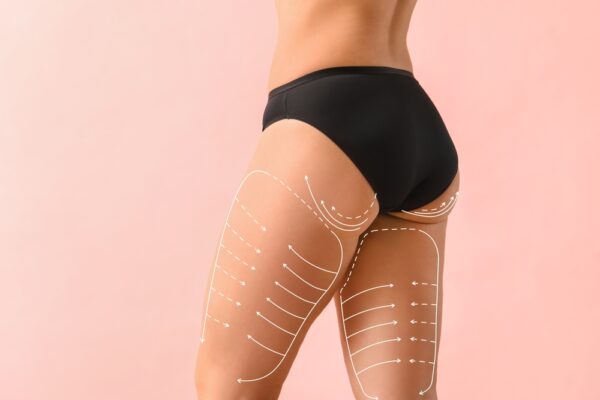
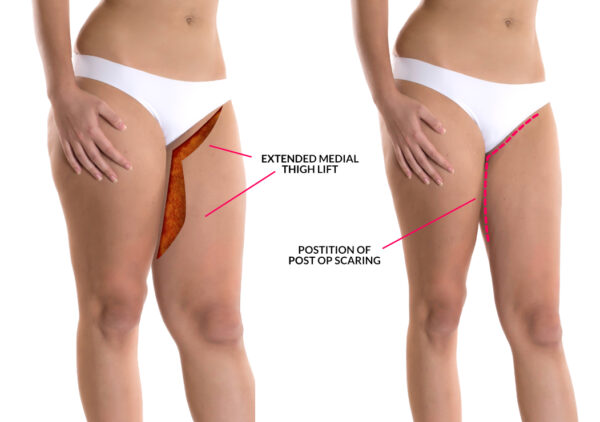

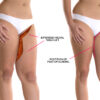

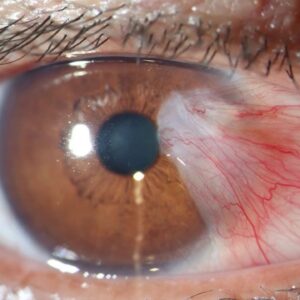


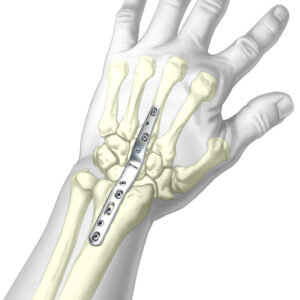

Reviews
There are no reviews yet.